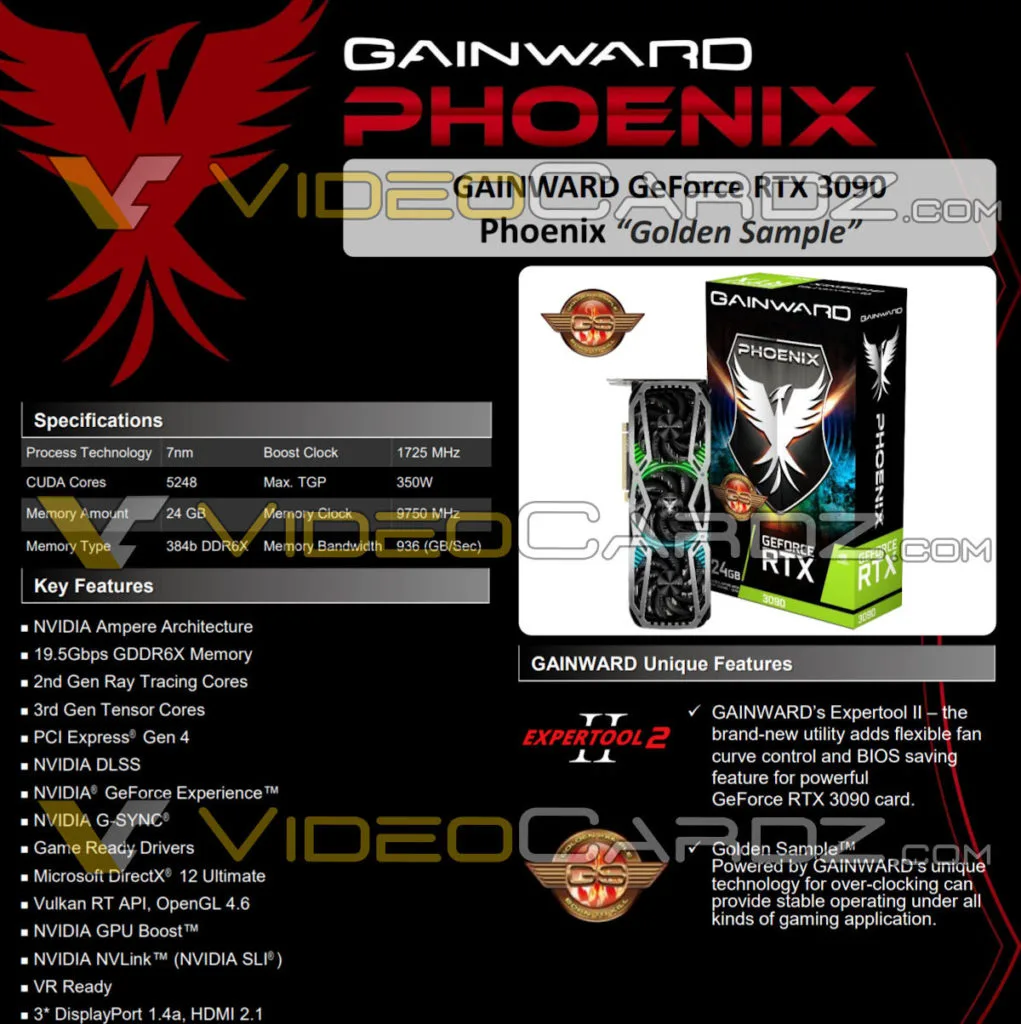
With only days to go until we finally get official release information from NVIDIA, new images from AIB partners have begun to surface. Just yesterday, we saw ZOTAC’s lineup for the upcoming RTX 30 series. Now, VideoCardz has obtained both images and detailed specs for Gainward’s GeForce RTX 3090 and RTX 3080 Phoenix “Golden Sample” cards.
Gainward Phoenix Geforce RTX 3090

First up, we have the Gainward Phoenix GeForce RTX 3090. Right away, we can see it features the same 5248 CUDA cores along with 384-bit / 19.5 Gbps GDDR6X / 24 GB VRAM, and a max TDP 350W that was reported earlier. However, there is something new, that as of yet, has not been confirmed before. We can finally see a RTX 30 Series card featuring both PCIe 4.0 support along with HDMI 2.1! This is the first time an NVIDIA GPU will have these next-gen options. This is exciting news for those planning to game in 4K on a TV with HDMI 2.1 support at above 60 Hz. This particular card seems to be a slightly overclocked variant with a 1725 MHz boost clock vs. 1695 MHz of the purported specs.
Gainward Phoenix Geforce RTX 3080

Next, we have the Gainward Phoenix Geforce RTX 3080. It, too, features nearly all of the same specifications leaked yesterday. The boost clock for this card is also seemingly overclocked to 1740 MHz vs 1710 MHz. One thing to note, though, is the absence of SLI support. It is doubtful many would miss it, considering that SLI support from game developers is all but nonexistent at this point. It appears that NVIDIA is only providing that for the flagship card at this time. This does, however, follow suit with other recent launches from green team. Both cards also feature a triple-fan cooling solution along with PCIe 4.0 and HDMI 2.1 support.
